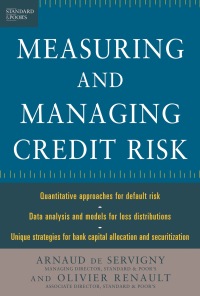Question
CASE: Your team has just been hired by a company to advise the firms capital budgeting division. The company has raised a sum of money,
CASE: Your team has just been hired by a company to advise the firms capital budgeting division. The company has raised a sum of money, which will be invested in a new project. From your team of financial specialists, they are seeking advice on the financial feasibility of one of the proposed projects, and its potential effects on the wealth of the shareholders of the company. Over the last two years, the company has already spent $100,000 on R&D for the newly proposed project. If the company would decide to actually go ahead with the project, the initial investment in the required equipment is expected to be $1,040,000. The new project is expected to run for 10 years, and after that point the project will be retired. The expectation is that at the end of the project, the assets of the project can be sold at a residual value of only 4% of their original value. Half of the total sum which the company has raised for this project has been borrowed at an interest rate equal to the average cost of debt of the company of 4.4%. In the first year the project is expected to generate a revenue of $624,000, and in the following years the revenues of this new project are expected to grow by 8.4% each year. Your team will have to determine the rest of the cash flows associated with this proposed project. The CFO of the company has indicated that it would be reasonable to expect that the operating costs of the new plant will be of similar proportion relative to the revenues as the companys other projects, which is at 65%. The new project would require an additional NWC of $20,800. Depreciation of the new equipment should be done in a straight-line over the full life of the project to a value of 0. Based on the already existing projects of the company, which will be running for the foreseeable future, the company is currently able to pay a stable yearly dividend of $5.00 per share. The company has 100,000 shares outstanding, and the shareholders require a return of 14.7%. The company is financed for 70% with equity, and 30% with debt (that is including the new loan). The effective tax rate for the company is 14%. If the company would decide to go ahead with the project, the yearly cash flows of the project can be partially paid out to the shareholders, and partially reinvested in other projects. The CFO has indicated that the company intends to have a payout ratio of 40%, such that each year 40% of free cash flows of the project will be paid as dividends.
-
A demonstration of the effect of the proposed project on the wealth of the shareholders, if the company would decide to go ahead with the project (regardless of your recommendation) and apply the suggested payout ratio. Present a well-designed figure that shows year by year, the change in the wealth of shareholders (= the share price + total dividends received). Also show their yearly capital gains and dividend yields. Hints:
-
o Calculate for every year of the project the total dividends paid. (= the stable dividend from existing projects + the paid dividends from the project)
o Calculate for every year the 3-year average growth rate in total dividendsthat is the average of the dividend growth rate over that year and the growth rate over the previous two years. (This can be done from year 3 onwards)
o Calculate for each year( from year 3 on wards)the share price using the DDM. You can use the average growth rate over the previous 3 years as the expected dividend growth rate in future.
Step by Step Solution
There are 3 Steps involved in it
Step: 1

Get Instant Access to Expert-Tailored Solutions
See step-by-step solutions with expert insights and AI powered tools for academic success
Step: 2

Step: 3

Ace Your Homework with AI
Get the answers you need in no time with our AI-driven, step-by-step assistance
Get Started


